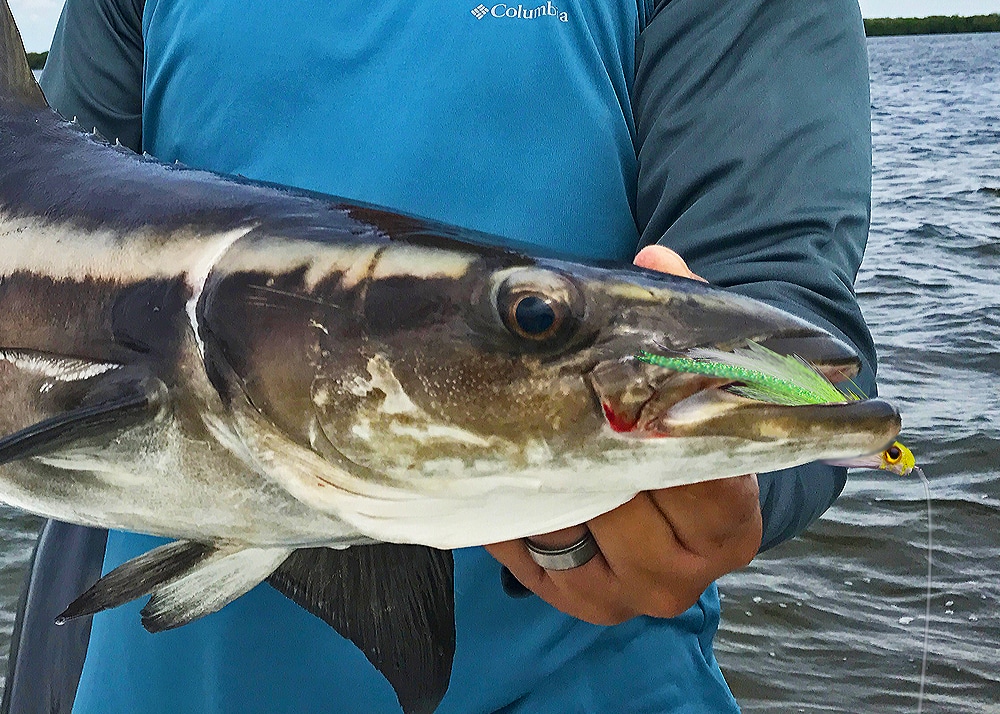
In May of 2002, Capt. Rick Caton, then fishing out of Oregon inlet, introduced me to cobia fishing with two of the most action-filled days I have ever experienced. We landed over 30 cobia, some upwards of 80 pounds, sight-casting with bucktails from Rick’s tower boat Free Agent, which was surrounded by a hundred boats targeting Spanish mackerel and bluefish, oblivious to the amazing cobia fishery under their noses.
The following year, I put into use much of what I learned during that memorable trip to catch cobia on fly gear, this time in my home waters of the Crystal Coast. One day, with Caton along for the ride, I ran my 23-foot Parker from the tower in search of fish cruising off Morehead City and Cape Lookout, and soon came across a big one. I made a sloppy cast, and the curious cobia moved in to investigate. But just as I untangled the line from my feet and boat cleats, and began stripping, the splash of a bucktail got the attention of the fish, which wasted no time in inhaling the lure. Caton apologized profusely as he set the hook: “I’m sorry, I just couldn’t help it!”
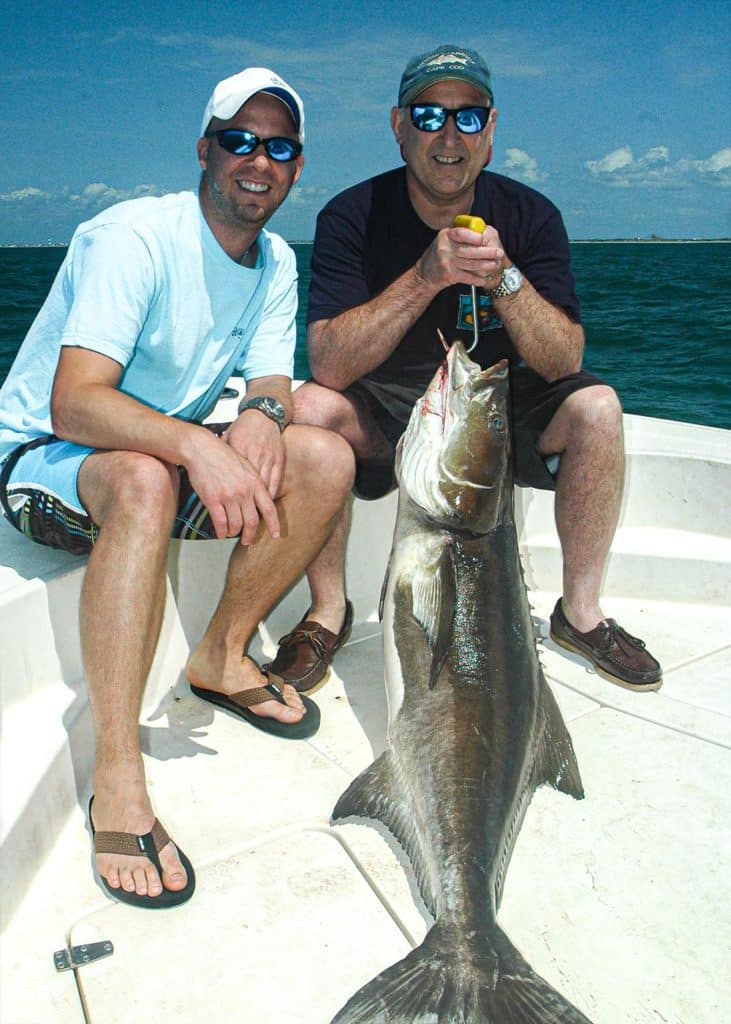
Rule number one of fly fishing for cobia was immediately evident: don’t let friends on board have access to conventional tackle. The temptation to fling a lure or bait at a big fish lollygagging on the surface is too strong for the average mortal to resist. Bringing along spinning rods to tease fish within fly-casting range is a good idea, but be sure to cut off the hooks on the jigs or plugs.
Capt. Joe Shute, renowned guide, lure maker and owner of Cape Lookout Fly Shop, concurs. “Have your buddies rig up spinning rods with a hookless topwater popper or a 10-inch, black, original-series Hogy soft-plastic eel for teasing.” I prefer a 2-ounce bucktail threaded with a 6-inch curly tail and the point of the hook removed.
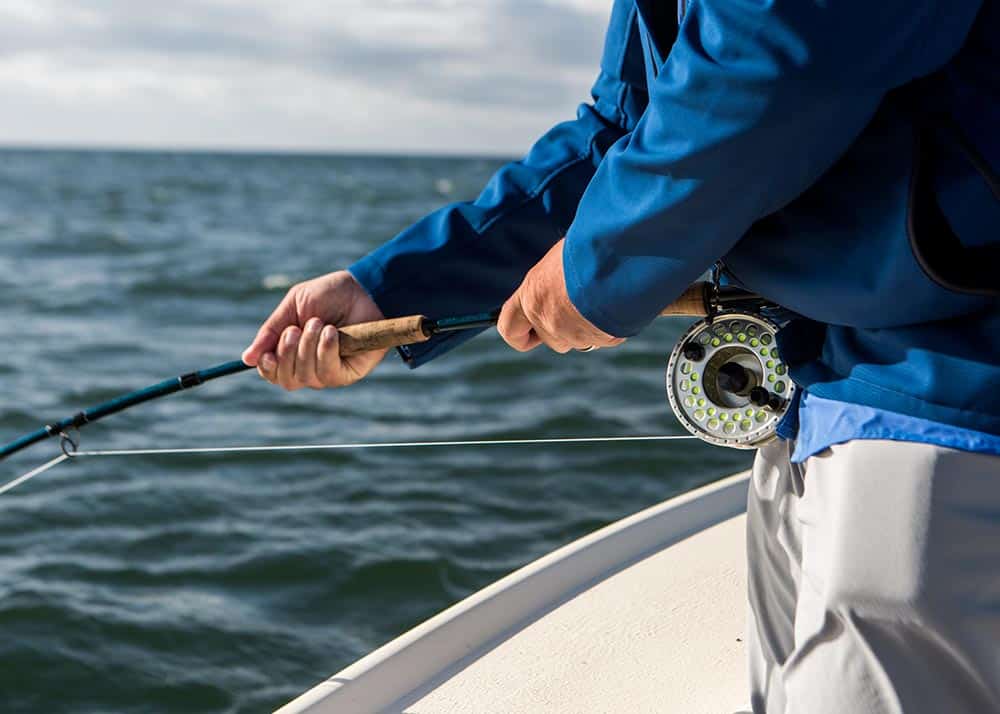
As for fly tackle, a 10-weight outfit will work for most cobia. Shute, however, opts for a 12-weight to handle any big, stubborn specimens. A floating line is often sufficient, yet a sink tip will get the fly down to fish you find circling below a buoy or bait ball, or that were on top at first but then begin to fade off.
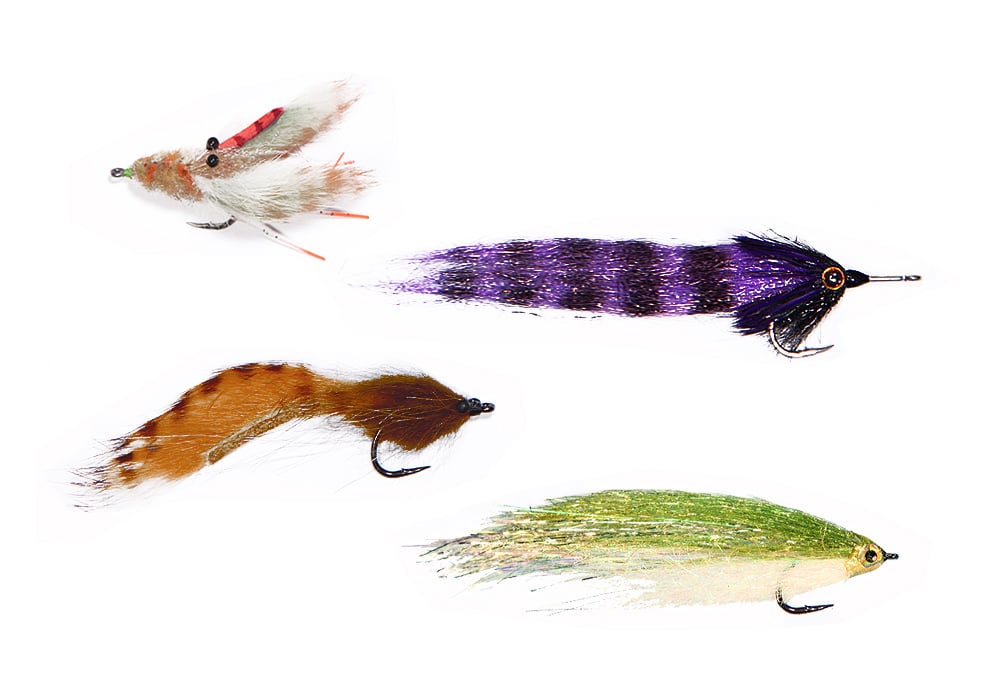
Flies should be big. Some anglers like bunny patterns for their enticing, undulating action. Shute swears by 6-inch menhaden patterns, and I like a 6- to 9-inch Half-and-half with some long feathers and really big eyes. Shute loves white flies, but I’ve found that cobia love orange Calico crabs, so bright orange and yellow flies will often trigger bites better than white.
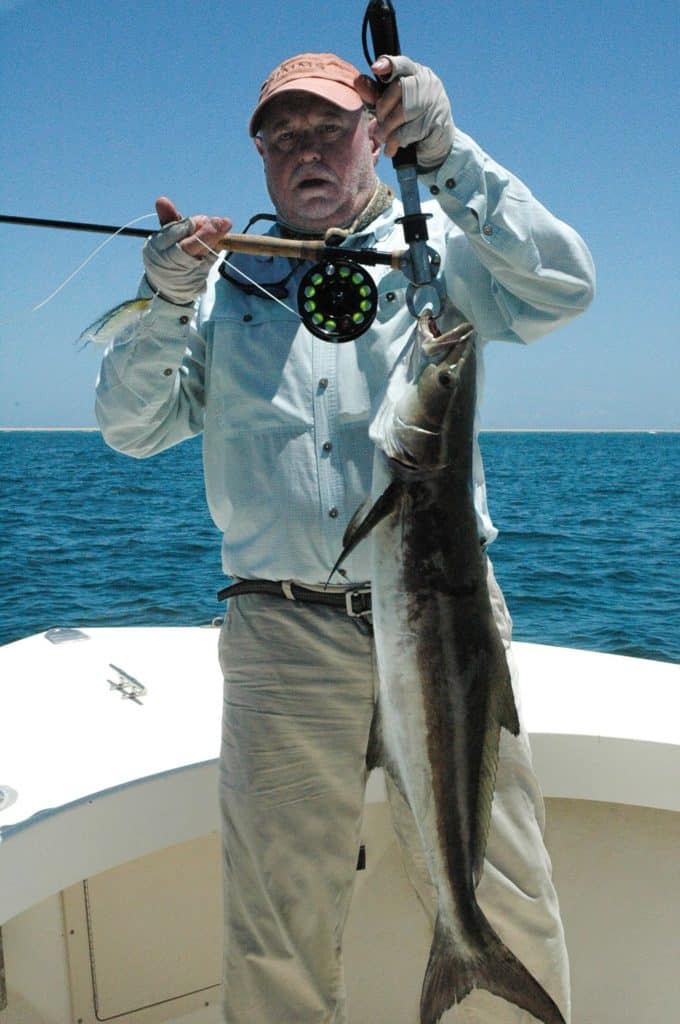
When it comes to looking for cobia, it pays to first consider water temperature. In the spring, once water temps reach the mid 60’s, the first waves of migrating fish show up, usually in early May, and they often bunch up on prominent tide lines and temperature breaks.
In very clear water, cobia can be seen on the bottom following large sting rays and manta rays, or shadowing schools of smaller cownose rays. In addition, cobia sometime hover on top of a school of big red drum, black drum and jumbo-sized bluefish.
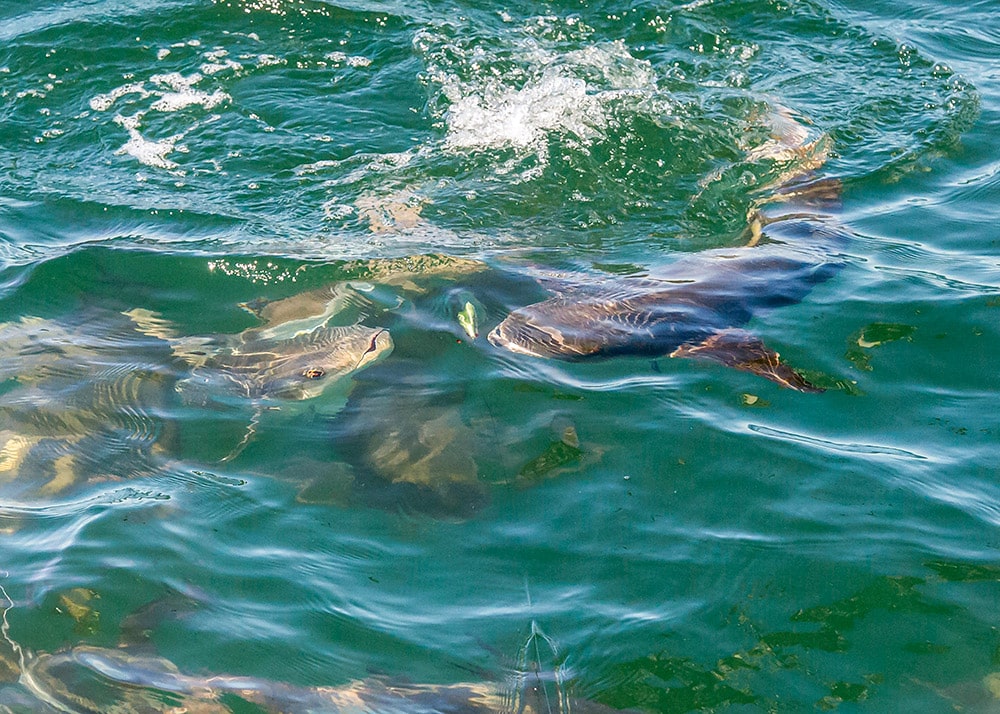
According to Shute, free swimming cobia on a tideline or those following rays will be most aggressive. The majority of cobia will readily eat a fly if they see it, but those hookless lures are very helpful for bringing the fish into fly-casting range. When a cobia appears skittish and stays a short distance away from the boat, a live bait bridled to a swivel is just the ticket to fire up the fish. So it’s smart to keep one rigged and ready in livewell, just in case.
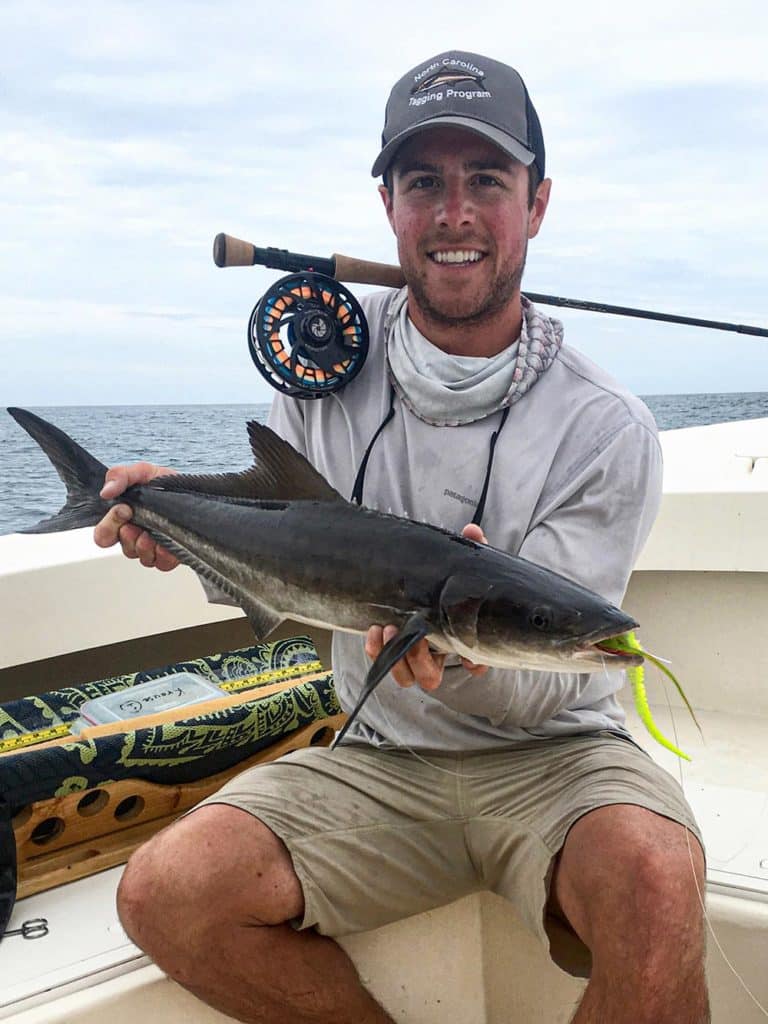
Once a cobia turns on the fly, keep it in the water and give it a short quick snap, stripping only enough to jerk it a few inches. Then pause and repeat. Cobia usually grab the fly on the pause, but can spit it out as quickly as they take it, so be ready with a fast strip strike, keeping the rod pointed at the fish.
Early in the fight, big fish often give you a shot with the gaff or net. Boating a cobia when it’s still green is not recommended, but if you decide to take the shot, be ready to back off the drag and clear the deck to avoid any mishaps on the way to the fish box. It’s a lot safer for the gear and everyone onboard to let the drag do its job, tiring the cobia before ending the fight and bringing the fish over the gunwales.
Even with a 12-weight, if a big cobia settles in for a vertical tug of war, you need to apply extra pressure — often requiring you to crank up the drag to 5 or 6 pounds — and pointing the rod at it to then lift by bending primarily the butt of the rod. Otherwise, you could be in for a very long time.
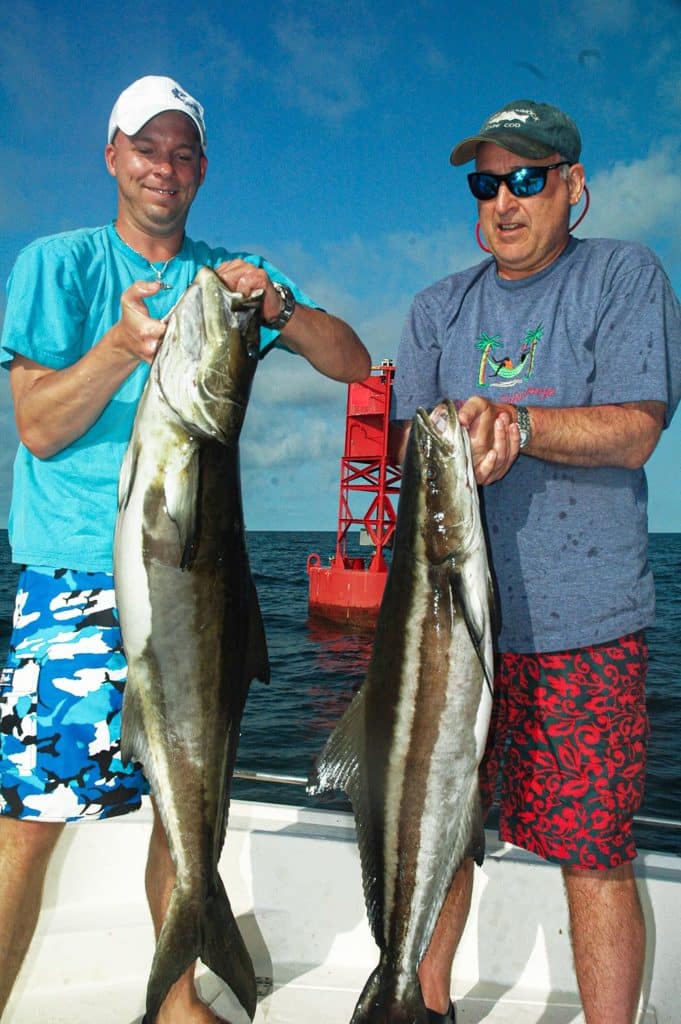
If you are eager to get after them, even before the first big waves of cobia hit the beaches, look for large packs staging on nearshore wrecks and reefs, in about 100 feet of water, from March through May. You’ll need a beefy fly outfit rigged with a heavy sink tip or full sinking line for the task. A long leader is not really necessary, but you may want to add a little piece of wire to the business end in case you stumble into kingfish or jumbo Spanish mackerel.
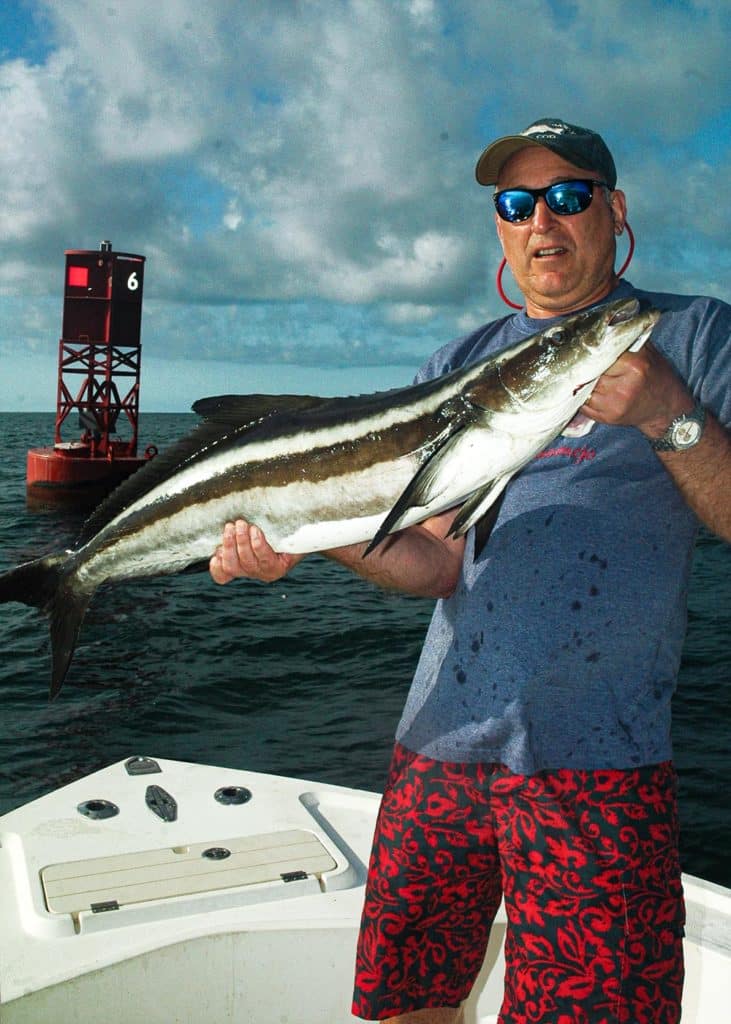
When fishing wrecks or reefs, dump the whole fly line to the backing and let it sink as far as it will go. Then strip it back quickly, and repeat the process. Meanwhile, have a buddy dropping a jig, spoon or bait rig to the bottom for sea bass. Sometimes cobia will follow a hooked fish up, affording fly anglers a shot.
Buoys are also known cobia hangouts. If you don’t see any swimming around or underneath a buoy, some could be farther down the water column, suspended near the buoy chain. Try dredging one up with the sinking line technique just described.
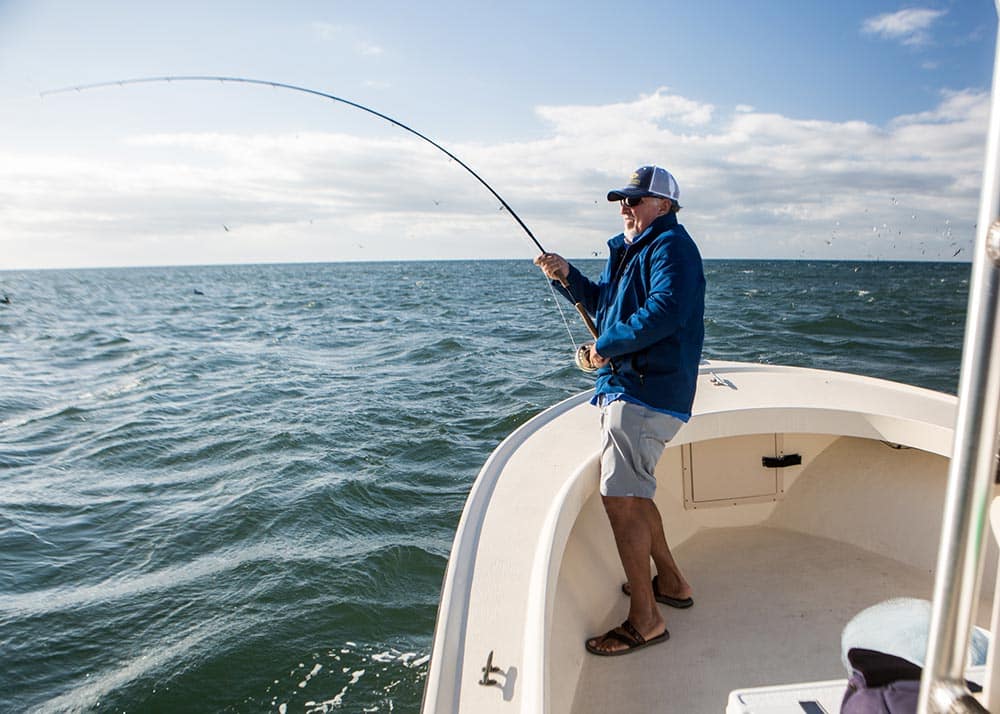
Cobia will swim around and under a bait ball, as well, plucking off any baitfish injured by mackerel or bluefish. Sinking lines and weighted flies will help you catch those too, even if you don’t actually spot them before you cast.
If the grey clouds and dirty water prevent you from sight casting, you can still chum up cobia to the boat. Deploy a sea anchor or a couple of 5-gallon buckets to slow your drift, and put out a heavy menhaden chum slick. And keep the fly rod in hand, because you never know when some hungry cobia may show up.









